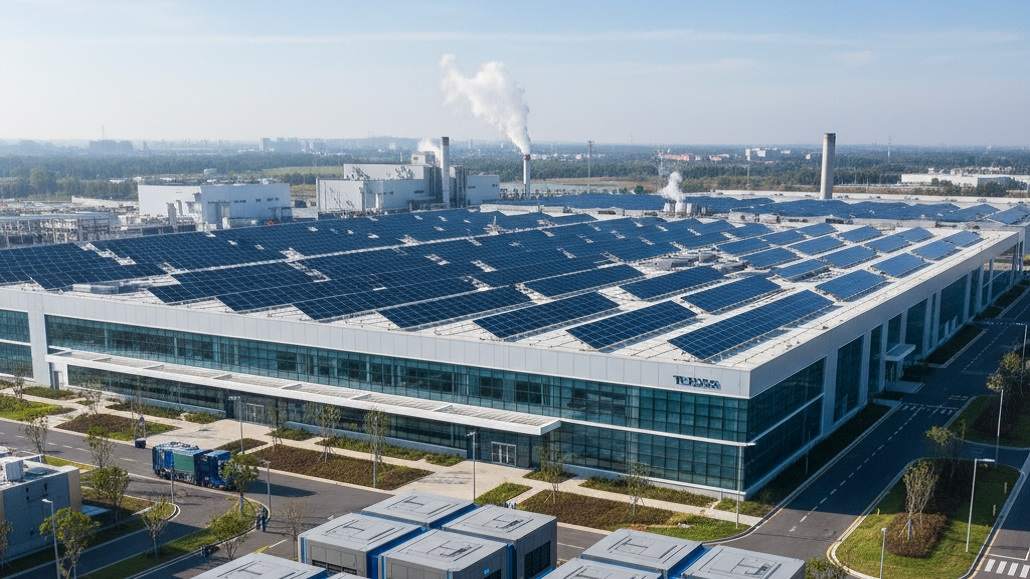Solar Energy Storage Breakthroughs: The Future of Industrial Power Reliability
Industrial operations worldwide face an increasingly complex energy challenge: maintaining reliable, cost-effective power supply while transitioning to renewable energy sources. Solar energy storage has emerged as the transformative solution, bridging the gap between variable solar generation and the unwavering power demands of manufacturing, processing, and production facilities. Recent breakthroughs in battery energy systems are fundamentally reshaping industrial power reliability, creating new paradigms for energy management and operational resilience.
The Industrial Power Reliability Imperative
Industrial facilities operate under stringent reliability requirements where even momentary power disruptions can trigger cascading failures, production losses, and safety hazards. Automotive manufacturing lines losing power for mere minutes can incur thousands of dollars in losses. Semiconductor fabrication plants require precise voltage regulation to prevent equipment damage and production defects. Chemical and pharmaceutical operations depend on uninterrupted power for batch processing and temperature-critical storage.
Traditional reliability solutions centered on grid connections backed by diesel generators. However, this approach faces mounting challenges including rising electricity costs, grid instability from increasing renewable penetration, diesel fuel price volatility, emissions regulations restricting generator operation, and limited scalability for expanding operations. Solar energy storage systems address these vulnerabilities while advancing sustainability objectives that increasingly influence corporate competitiveness and market access.
Battery Energy Storage System Architecture
Modern battery energy storage systems for industrial applications comprise several integrated components working in concert. The battery system itself contains individual low-voltage cells arranged in racks within modular or containerized enclosures. Lithium-ion batteries dominate current installations, particularly lithium iron phosphate chemistry valued for safety characteristics and long cycle life. The battery management system ensures safe operation by monitoring current, voltage, and temperature across individual cells, estimating state of charge and state of health to prevent safety risks while optimizing performance.
Power conversion systems featuring bidirectional inverters convert direct current electricity from batteries to alternating current for industrial loads, and vice versa during charging. These inverters enable rapid switching between grid power, solar generation, and battery discharge based on real-time conditions. Energy management systems serve as the orchestration layer, coordinating battery management systems, inverters, and connected generation sources while analyzing data to optimize overall system performance. Safety systems including fire suppression, smoke detection, and temperature control ensure secure operation, with dedicated monitoring preventing hazardous incidents.
Technology Advancements Driving Performance
The global solar energy storage battery market valued at 5.27 billion dollars in 2024 is projected to reach 19.10 billion dollars by 2032, reflecting a compound annual growth rate of 16.94 percent. This explosive growth is fueled by technological breakthroughs enhancing performance, safety, and economics.
Battery chemistry improvements have extended cycle life while increasing energy density. Advanced lithium-ion formulations now deliver over 5,000 charge-discharge cycles at 80 percent depth of discharge, compared to 3,000 cycles in earlier generations. Solid-state batteries under development promise even greater energy density and safety by eliminating flammable liquid electrolytes.
Storage duration capabilities have expanded significantly. While most existing battery energy storage systems offer two to four hours of capacity, next-generation solutions extend to six-hour and ten-hour configurations, enabling industrial facilities to bridge extended grid outages or maximize solar energy utilization across operational shifts. Flow battery technology, using liquid electrolytes stored in external tanks, provides scalable long-duration storage particularly suited for large industrial applications.
Smart energy management systems leveraging artificial intelligence represent perhaps the most transformative advancement. These systems analyze historical consumption patterns, weather forecasts, electricity pricing signals, and operational schedules to optimize charging and discharging decisions in real-time. Predictive analytics anticipate equipment maintenance needs, preventing unexpected failures that could compromise facility operations.
Industrial Applications and Use Cases
Battery energy storage systems deliver multiple value streams for industrial operations. Peak shaving reduces demand charges by discharging batteries during high-consumption periods, cutting electricity costs by 20 to 30 percent for facilities facing high demand charges. Load shifting stores low-cost off-peak electricity for use during expensive peak periods, capitalizing on time-of-use rate structures.
Power quality management addresses voltage fluctuations and frequency deviations that can damage sensitive equipment or disrupt precision manufacturing processes. Battery systems respond within milliseconds to stabilize voltage and maintain power quality specifications. Backup power capability ensures business continuity during grid outages, with batteries providing seamless transition to stored energy without the noise, emissions, or startup delays of diesel generators.
Renewable energy integration maximizes on-site solar generation utilization. Batteries store excess midday solar production for use during evening shifts or overnight operations, increasing solar self-consumption from typical rates of 30 to 40 percent to over 80 percent. This integration reduces fossil fuel dependency while improving return on solar investment.
The food and beverage industry exemplifies storage benefits, where cold storage and continuous processing demand uninterrupted power to maintain temperature control and ensure safety compliance during outages. Heavy equipment and metal fabrication operations leverage load shifting and peak shaving to manage high power draws that would otherwise trigger substantial demand charges.
Economic Considerations and Market Dynamics
Solar energy storage economics have improved dramatically, with installed system costs declining to 280 to 580 dollars per kilowatt-hour for small to medium commercial projects in 2025. Large-scale containerized systems exceeding 100 kilowatt-hours achieve costs of 180 to 320 dollars per kilowatt-hour depending on scale, integration complexity, and regional factors.
Total project costs for a representative 100 kilowatt-hour industrial system range from 25,000 to 50,000 dollars including battery pack, battery management system, inverter, and installation. Battery pack prices have declined precipitously, dropping nearly 50 percent to approximately 55 dollars per kilowatt-hour by mid-2025. This cost reduction, primarily driven by manufacturing scale improvements and supply chain optimization, makes storage economically viable for broader industrial applications.
Payback periods for industrial battery storage typically range from three to seven years depending on electricity rates, facility load profiles, available incentives, and ancillary value streams. Facilities in regions with high electricity costs, substantial demand charges, or frequent power quality issues realize faster returns. Government incentives including tax credits, accelerated depreciation, and viability gap funding further improve project economics.
Operating costs remain modest, with annual maintenance expenses of 150 to 300 dollars for residential-scale systems scaling proportionally for industrial installations. Lithium iron phosphate batteries demonstrate particular cost-effectiveness over system lifetimes due to long cycle life and minimal degradation.
Grid Services and Revenue Opportunities
Beyond facility-level benefits, industrial battery storage can generate revenue through grid services participation. Frequency regulation maintains grid stability by rapidly injecting or absorbing power to balance supply and demand fluctuations, with compensation rates making this service lucrative in many markets. Energy arbitrage involves charging batteries when wholesale electricity prices are low and discharging when prices peak, capturing price spreads that can significantly offset operating costs.
Capacity markets compensate battery owners for making power available during peak demand periods, providing predictable revenue streams that improve project financial profiles. Demand response programs offer incentives for facilities that reduce grid consumption during critical periods by switching to battery power.
Vehicle-to-grid integration represents an emerging opportunity where electric vehicle fleets at industrial facilities can serve as distributed storage assets, feeding power back to operations during demand peaks. This dual-use approach maximizes asset utilization while supporting facility energy management.
Safety and Regulatory Compliance
Safety remains paramount for industrial battery installations given the energy density and chemical properties of lithium-ion systems. Thermal management systems ensure cells operate within safe temperature ranges, preventing thermal runaway events that could trigger fires. Compliance with standards including UL 9540A, IEC 62933, and national codes mandates fire and explosion risk mitigation measures.
Industrial facilities must develop emergency response plans and train personnel for handling potential thermal events. Robust cybersecurity protocols are essential for grid-connected systems to prevent unauthorized access that could compromise operations or grid stability. Insurance requirements and local authority approvals add complexity but ensure installations meet stringent safety expectations appropriate for industrial environments.
Implementation Considerations
Successful industrial battery storage deployment requires careful planning addressing multiple dimensions. Site assessment evaluates available space for equipment installation, electrical infrastructure capacity, thermal management requirements, and safety considerations including fire code compliance and emergency access. Load analysis examines consumption patterns, peak demand timing, power quality requirements, and renewable generation profiles to optimize system sizing.
Financial modeling incorporates electricity rate structures, available incentives, operational cost savings, potential revenue streams, and financing options to determine project viability and expected returns. Technology selection balances battery chemistry, storage duration, power rating, cycle life expectations, and warranty terms against application requirements and budget constraints.
Integration complexity varies with facility electrical systems, existing renewable installations, control system sophistication, and desired automation levels. Phased implementation allowing system expansion as needs grow or economics improve often proves advantageous.
The Path Forward
Solar energy storage breakthroughs are accelerating industrial power reliability improvements while enabling renewable energy transitions. Continued battery cost reductions, expanding storage duration capabilities, advancing smart control systems, and evolving regulatory support will drive broader adoption across industrial sectors.
The convergence of economic viability, technological maturity, and sustainability imperatives positions battery energy storage as foundational infrastructure for industrial operations. Facilities implementing these systems today gain competitive advantages through reduced energy costs, enhanced reliability, grid independence, and environmental leadership. As storage technologies continue advancing and grid dynamics evolve, early adopters will be best positioned to capitalize on emerging opportunities while navigating the complex energy landscape of the coming decades.





































